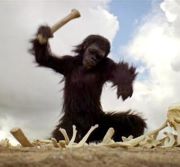Phy posted:
I would imagine that if you where going exploring you would like to have as many alternative methods of making the ship move as possible. Especially when you're going to the North or South Pole which is some of the most isolated places in the world. Not that that helped the brits.
|
|
|
|
|

|
| # ? May 4, 2024 03:40 |
|
Soul Dentist posted:Yeah let's talk about the Endurance and how Shackleton updated his crew's diet and successfully avoided scurvy and fake medicine Shackleton never got Covid, that's all I'm saying.
|
|
|
|
Terror and Erebus were fit up for Arctic exploration built off the bones of old bomb vessels. Building a ship to withstand recoil from giant mortars overlaps with the design goal of withstanding sea ice. Also Antarctica and the surrounding seas are extremely windy all the time with strong currents. An experienced sailor will never want for wind power (but will often wish it was less windy)
|
|
|
|
Halley sought to measure the areas of English counties by cutting up a map and weighing the pieces.
|
|
|
|
3D Megadoodoo posted:Halley sought to measure the areas of English counties by cutting up a map and weighing the pieces. Perfectly valid method, often used in the days before computers.
|
|
|
|
I belive that metal ships capable of withstanding ice pressure were kind of a new thing at the time, and metal-hulled ordinary ship would crack immediately, whereas wooden ships could flex at bit. I've read Shackleton's account of the Endurance expedition, and I, no joking, wept when I got to the bit where he finally got back to where the rest of the crew were waiting on Elephant Island. "All well?" "All well boss" It's an amazing and inspiring read. Shackleton was an insanely good leader.
|
|
|
Another polar fact: Scott actually helped prove that the continental drift theory was correct. He found fossils of the glossopteris trees that showed that Antarctica was once joined with other continents. Unfortunately for him, carrying big rocks in his backpack didn't exactly improve his chances of survival.Pookah posted:I belive that metal ships capable of withstanding ice pressure were kind of a new thing at the time, and metal-hulled ordinary ship would crack immediately, whereas wooden ships could flex at bit. With polar ship it was more about how it was constructed, rather than what material they used. If a ship got caught in the ice it would be crushed, even if was made of wood. Nansen contructed a ship that was designed to be pushed up instead of down for one of his expeditions: https://en.wikipedia.org/wiki/Fram_(ship) Alhazred has a new favorite as of 20:40 on Mar 9, 2022 |
|
|
|
|
Alhazred posted:Another polar fact: Scott actually helped prove that the continental drift theory was correct. He found fossils of the glossopteris trees that showed that Antarctica was once joined with other continents. Unfortunately for him, carrying big rocks in his backpack didn't exactly improve his chances of survival. The Fram! A roundy ship, designed to rise up and out of pressure if it got frozen into the ice. I loving love polar exploration.
|
|
|
|
All of shackletons accounts of his polar explorations are extremely readable and gripping, but another really good and interesting book on the subject is "Home of the Blizzard" by Douglas Mawson. They set up their base camp in a place where the catabatic antarctic winds came down, so their cabin was in line with hurricane-force winds all day, every day. I got to see Mawsons memorial in New Zealand a few years ago, it was really cool  Edit: if anyone is interested in reading about early 20th century antarctic exploration, but doesn't want to read about avoidable death, stick to Shackleton. In an environment extremely likely to kill, Ernest Shackleton never lost a single person. He could have reached the south Pole first, but he knew they'd all die doing so, so he turned back. Shackleton was an extremely decent man. Pookah has a new favorite as of 21:00 on Mar 9, 2022 |
|
|
|
Deteriorata posted:Perfectly valid method, often used in the days before computers. Not that paper machines were perfect but at least the running length tended to be consistent short of major process failures like a poo poo wire or broken roller because of things like uniform pressing pressure, drainage etc. and your width dimension can be better off too because you level and monitor your rollers instead of dick around with your frame press every sheet and have special pulp spray nozzles to ensure adequate starting coverage. It took a couple iterations on the Fourdrinier machine to get consistent thickness mainly because of it's rudimentary wire and presses but it still took advantage of the old batch continuous production benefit that if it's wrong, it's continuously wrong with it's neighbors being very similar.
|
|
|
Pookah posted:
|
|
|
|
|
zedprime posted:How much did that paper cost? Before continuous paper making you had to level your forms just so in two dimensions and have an absolute expert hand at pressing to get something approaching uniform thickness. E: it was a paper map. 3D Megadoodoo has a new favorite as of 21:29 on Mar 9, 2022 |
|
|
|
One of my favourite quotes ever:Roald Amundsen posted:Adventure is just bad planning.
|
|
|
|
zedprime posted:How much did that paper cost? Before continuous paper making you had to level your forms just so in two dimensions and have an absolute expert hand at pressing to get something approaching uniform thickness. Yes, there was special, highly uniform paper used for graphical analysis. You didn't use it for everyday stuff. You plotted your graph and then cut out the sections and weighed them to get their relative areas. It was standard practice for hundreds of years.
|
|
|
|
Alhazred posted:Nansen contructed a ship that was designed to be pushed up instead of down for one of his expeditions: I'm amazed Netflix or whoever hasn't commissioned a biopic/series about Nansen yet. poo poo, they might have to leave things out in order to make it more believable.
|
|
|
|
So goddamn true. The norgwegians were actively demonstrating the value of using skis and sled dogs when the British navy were committing to horses and loving MEN dragging sleds Edit: I started reading the memoir of Nansen and the fram, but was immediately put off by the bit where they shot an Arctic fox for funnsies. Those guys were competent, but they'd were also shitbirds. Shackletons crew killed and ate a baby albatross, but they were starving at the time and felt bad about it. Nansen never felt bad about being a shitbird victorian hunter so gently caress him. Pookah has a new favorite as of 22:06 on Mar 9, 2022 |
|
|
|
When I was five, I saw my dad in the play version of Terra Nova. Years later, I asked my mom what they were thinking, letting a kindergartener go to play where everybody froze to death. Her response was "We couldn't get a babysitter." Anyway, that's my Antarctic exploration story.
|
|
|
|
Speaking of polar expeditions. You know how lime juice was used by the English navy to prevent scurvy? That didn't worth for the polar expeditions. At some point the Royal Navy switched from Sicilian "limes" to cheaper ones grown in the West Indies. Never mind that the new ones are green; back then everything was called a lime. The important thing is that they're small, round and sour, right? The fact is that what we call limes today have much less vitamin C than lemons. In addition the storage methods used later, in the second half of the 19th century would break down the vitamin C even more. This wasn't discovered because the sailing trips had become much shorter with steam powered ships. But polar expeditions were year long affairs and British expeditions in 1875 and 1894 were devastated by scurvy. On the latter, the crew who remained on the ship got scurvy while the explores who ate fresh polar bear didn't. Scott's expedition to Antarctica in 1903 didn't bring lime juice, thinking it was outdated superstition - instead, scurvy was blamed on bad tinned meat. When his expedition got scurvy anyway, fresh seal meat worked as a cure, further cementing the idea that lime juice didn't have anything to do with scurvy after all. It was more or less by accident that Axel Holst and Theodor Frølich (re)discovered the effects of vitamin C in the 1910s. They were actually studying beri-beri (vitamin B deficiency) by testing a grain-only diet. By chance they chose Guinea pigs as test subjects, the only mammal species other than primates that cannot synthesize vitamin C. Albert Szent-Györgyi finally managed to isolate the vitamin and was awarded the Nobel Prize in medicine in 1937. He's an interesting person all by himself. Much of this post is a summary of this great essay titled Scott and Scurvy. It's worth a read!
|
|
|
|
3D Megadoodoo posted:Halley sought to measure the areas of English counties by cutting up a map and weighing the pieces. Is there some hideous surveying math involved to make an area preserving (but necessarily angle distorting) map projection?
|
|
|
|
Phy posted:Reminds me I still havent finished watching The Terror. Though you don't need a demon polar bear to murder an Arctic expedition, just an incomplete understanding of nutrition in an environment utterly hostile to those who haven't spent their entire lives learning how to live there. Arctic Labyrinth and The Man Who Ate His Boots are two good books about the English's wild attempts to find the Northwest Passage. The former details the John Ross expedition, which got lucky to not all be dead. Then you get the Franklin Expedition, which is what inspired The Terror. The Franklin Expedition accidentally did well. They all died mostly brutal, hungry deaths but huge swaths of Canada were mapped in the efforts to find them.
|
|
|
Pookah posted:So goddamn true. The norgwegians were actively demonstrating the value of using skis and sled dogs when the British navy were committing to horses and loving MEN dragging sleds Nansen helped hundred of thousands of refugees and saved Norway from a famine: https://en.wikipedia.org/wiki/Fridtjof_Nansen#Statesman_and_humanitarian I don't think one dead fox is enough to tip the scales in his disfavor.
|
|
|
|
|
zedprime posted:I'm not convinced that this example is evidence based medicine vs not. "N95s have physical properties conducive to preventing illness" is evidence based. "There are no clinical studies of N95" is also evidence based. It's not beep boop clinical studies only, the evidence based robot dismisses your physics. We shouldn’t throw out the concept of evidence‐based medicine because of some bad actors, but people have really hid behind it to justify awful things. Here’s language from a prepandemic trial: quote:Despite widespread use of respiratory protective equipment in the U.S. healthcare workplace, there is very little clinical evidence that respirators prevent healthcare personnel (HCP) from airborne infectious diseases. Scientific investigation of this issue has been quite complicated, primarily because the use of respirators has become "the standard of care" for protection against airborne diseases in some instances, even without sufficient evidence to support their use. The key question remains: How well do respirators prevent airborne infectious diseases? The answer to this important question has important medical, public health, political and economic implications. No, you nincompoops, there is absolutely sufficient evidence to support them as the standard of care. We don’t need to give a bunch of healthcare workers and their families influenza or worse to satisfy your compulsion. It is There have been proposals for similar during the present pandemic as well, which is just beyond the pale.
|
|
|
|
Wow that is a fun historical fact
|
|
|
|
Thanks. When you work up the courage to post your first historical fun fact, may it receive the same treatment.
|
|
|
|
Alhazred posted:Nansen helped hundred of thousands of refugees and saved Norway from a famine: https://en.wikipedia.org/wiki/Fridtjof_Nansen#Statesman_and_humanitarian ...  ... yeah, ok that probably does make up for it. ... yeah, ok that probably does make up for it.
|
|
|
|
You need to work up courage to post lol
|
|
|
|
For some, posting is a battlefield of ideas. For others it's thursday
|
|
|
|
Who likes to hear about surveying errors? O.K. so usually these things go something like “a surveyor got drunk, so here’s a weird squiggle of little consequence on some jurisdiction’s border”. We can’t rule out drink, but this time bad surveying saved a tract of virgin forest in the Appalachian Mountains. quote:Some years before the Civil War a speculating land company bought a tract of 69,000 acres [280 km2] on the slope of Shavers Mountain. Their tract fronted for about seven miles [11 km] along the eastern side of the mountain. To survey and mark their holdings the company hired a crew of men who must have found rough going in this wilderness. The crew did a good job, but its chief forgot one thing – the fact that a compass needle points to magnetic, not true north. In this area the angle of declination is about four degrees, a significant source of error on a seven-mile [11 km] front ... An experienced Virginia surveyor, in checking the data, discovered the error but said nothing about it. Presently, however, when the sale was being concluded and the deeds recorded, he brought the error to light, and under a sort of "doctrine of vacancy" claimed the wedge of land left by a corrected survey. His title was established, and he and his heirs found themselves owner of a seven-mile strip of forest, aggregating almost 900 acres [3.6 km2]. While timber above and below the wedge was cut, this narrow holding was undisturbed. Its thickest end, a fringe of tall spruces on the near horizon, is just east of Gaudineer Tower. From these trees came seed to produce a new forest, a happy result of a hundred-year-old mistake. Platystemon has a new favorite as of 12:54 on Mar 10, 2022 |
|
|
|
Speaking of failed polar expeditions, the Antarctic Snow Cruiser deserves a mention. Even if it's not a lethal one I should mention. But still a very failed venture. The basic idea of building a large RV-like to explore the antarctic is sound. It's just a shame they failed by making an far too heavy, and far too underpowered, monstrosity to do it with. Especially when they completely forgot to test it before hand so when they arrived they realized it pretty much couldn't move. The longest trip was done in reverse because they discovered it was faster that way. And nowadays it's either at the bottom of the ocean or under a ton of ice. No one really knows.
|
|
|
|
I love failed expeditions. The late 19th and early 20th century is full of them - a bunch of toffs decide they're going to explore something and then insist on taking 20 tonnes of useless equipment because they can't understand the idea of maybe not going into the South American rainforest with a formal dining table or their entire drinks cabinet.
|
|
|
|
It wasn't just the brits that went to the poles to die, the russians didn't fare much better. in 1912 Georgy Brusilov sailed with the Svyataya Anna to try and find the northeast passage. The ship became icebound and drifted away to the north. This didn't do wonders with the relationship of Brusilov and his crew. It got to the point where the navigator Valerian Albanov asked for permission to leave the Svyataya Anna with half of the crew to try and find help, the permission was immediately granted. Albanov and one more member of the crew was the only one to survive the expedition. Brusilov was never seen again. The same year Georgy Yakovlevich Sedov sailed with the Svyatoy Foka to try and reach the North Pole by dog sleigh. The next year they arrived at Franz Josef Land and Sedov decided to try and reach the pole despite the fact that he now suffered from scurvy. He didn't make it past Rudolf Island where he died. His grave has never been found and according to two members of the expedition it's because his body was cut to pieces and fed to the dogs to ensure that they could make it back. On the way back the Svyatoy Foka accidentally came across Albanov from the Brusilov expedition and saved him. The norwegian Otto Sverdrup was tasked to find the missing russians. He didn't find them but he managed to save another failed russian expedition lead by Boris Vilktskij. Alhazred has a new favorite as of 16:52 on Mar 10, 2022 |
|
|
|
|
Pookah posted:...
|
|
|
F4rt5 posted:He got the Nobel Peace Prize for it too, when that was a thing that was not dumb
|
|
|
|
|
Sweevo posted:I love failed expeditions. The late 19th and early 20th century is full of them - a bunch of toffs decide they're going to explore something and then insist on taking 20 tonnes of useless equipment because they can't understand the idea of maybe not going into the South American rainforest with a formal dining table or their entire drinks cabinet. the legendary Burke and Wills or whatever expedition in Australia iirc brought a loving grandfather clock like it's Oregon Trail or something
|
|
|
|
Ghost Leviathan posted:the legendary Burke and Wills or whatever expedition in Australia iirc brought a loving grandfather clock like it's Oregon Trail or something I'd love to know what they were thinking when they decided "yeah we'll definitely need to bring a Chinese gong".
|
|
|
|
Phy posted:Reminds me I still havent finished watching The Terror. Though you don't need a demon polar bear to murder an Arctic expedition, just an incomplete understanding of nutrition in an environment utterly hostile to those who haven't spent their entire lives learning how to live there. From what I remember that auxiliary engine was almost completely detrimental as it was horribly inefficient, maybe used from a different ship?
|
|
|
|
Not something I've come across in the last couple of days reading about Endurance, but I do remember that being the case with Erebus and Terror (at least in the Dan Simmons book and the TV show, I haven't read any primary sources). Granted those were much older vessels, built as pure sailing ships and retrofitted with screws for the Franklin expedition. Their engines were 25 hp locomotive engines and they carried all of less than two week's fuel. My understanding is that their steam drives were supposed to be for last-ditch oh-poo poo icebreaking to get somewhere where they could fill sails again, and the coal was used far more for keeping the ships warm. Endurance's engine was built in from the start and rated for 350 hp.
|
|
|
|
Yeah that sounds about right, I went through a phase where I read a whole bunch of failed arctic expeditions and got them all mixed up. I think the engine was also very large as well as being extremely inefficient.
|
|
|
|
Ghost Leviathan posted:the legendary Burke and Wills or whatever expedition in Australia iirc brought a loving grandfather clock like it's Oregon Trail or something The greatest revolution in land surveying was the telegram, which let you send standard clock pulses to the boonies and not need to risk your house-priced chronometer in the field. But being passingly familiar with Burke and Willis, that's probably giving too much credit.
|
|
|
|

|
| # ? May 4, 2024 03:40 |
|
Sweevo posted:I'd love to know what they were thinking when they decided "yeah we'll definitely need to bring a Chinese gong".
|
|
|





































